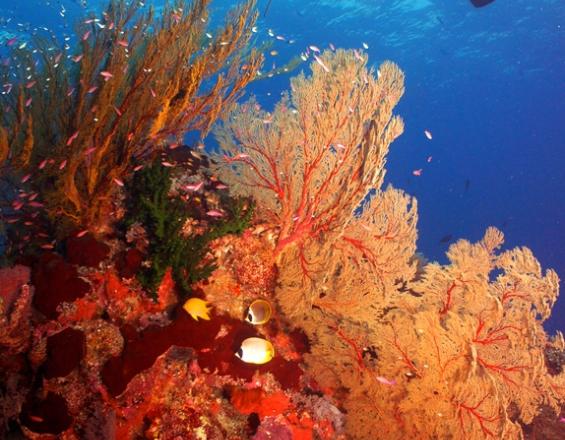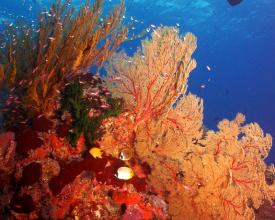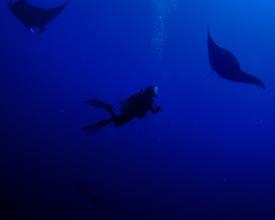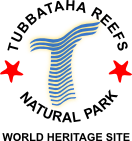Tubbataha Reefs Natural Park Act

The Tubbataha Reefs Natural Park (TRNP) Act showcases the most successful management of a remote no-take reserve in the Philippines. The formulation of policies for TRNP involved multiple consultations with a cross section of society from village to national level. The consultative process ensured that the affected communities and stakeholders were able to shape the contours of the law, thereby embedding fairness in rule-making and inspiring voluntary compliance.
Context
Challenges addressed
Location
Process
Summary of the process
Building Blocks
Participatory Development of the Act
A series of multi-stakeholder consultations and workshops to draft and review the Act ensured full stakeholder participation and fostered compliance with regulations. The Internal Rules and Regulations (IRR) of the Act has since been reviewed and updated several times and now includes policies on ecosystem research, tourism and management plan for the buffer zone. It was communicated to the public through outreach activities. Trainings and information campaigns promoted awareness and understanding of the global significance of this biodiversity hotspot.
Enabling factors
- National and international NGOs have provided the initial funds and technical know-how
- Good understanding of the problems and management options already existed
Lesson learned
The TRNP Act institutionalized the representation of a wide sector of society in the policy-making body, the Tubbataha Protected Area Management Board (TPAMB), enabling stakeholders to articulate their concerns and influence rule-making. Tubbataha has demonstrated that with sensitively negotiated stakeholder agreements local communities do not need to bear the burden of no-take protected areas, but rather, can be their main beneficiaries.
Resources
Information Campaigns
To promote awareness and a general understanding of the global significance of this biodi¬versity hotspot, the developed Act and policies are commu¬nicated to the public through various outreach activities, e.g. through radio plugs and local newspapers.
Enabling factors
- Public outreach activities in local schools and fishing villages enabled by local government and school administration support
- Contributions of radio stations and local papers through reduced rates
Lesson learned
To promote awareness and a general understanding of the global significance of this biodiversity hotspot, the developed Act and policies are communicated to the public through various outreach activities, e.g. through radio plugs and local newspapers.
Locally-based Park Management and Law Enforcement
Local institutions and communities, municipal and national govern¬ment representatives, NGOs, academia, and the private sector are all represented in a locally-based park management and law enforcement body. Law enforcement is ensured through partnerships with the Philippine Navy and Coast Guard and locally recruited park rangers who receive in-depth training and appropriate surveillance equipment. The environmental situation in the park is monitored regularly, while the effectiveness of governance is measured annually using participatory mechanisms.
Enabling factors
- Partnerships provide the support necessary for law enforcement operations. The Philippine Navy and Coast Guard play the biggest role by detailing personnel on rotation duty at the ranger station and supply of technical equipment
- Locally-based management body, solely dedicated to implementing the park’s management plan and maintaining a presence in the park
Lesson learned
Effective law enforcement requires appropriate enforcement capacities and equipment at the level of the MPA management agency. The management of a National Marine Park requires adequate resource use policies to being in place and being enforced including stringent penalties for non-compliance as a disincentive to illegal use. These laws, rules and regulations need to be supported and adhered to by the legitimate resource users and other relevant stakeholders.
Financing Park Management
Tubbataha Reefs Natural Park (TRNP) is run with financial assistance from a range of sources. Conservation fees paid by visitors are the main source of funding, providing 74% percent of the annual budget. Grants from NGO’s and the private sector make up the other 26%. These funds are deposited in a local trust fund managed by the Tubbataha Protected Area Management Board and used solely for the administration of the Park.
Enabling factors
- Tubbataha’s natural beauty and rich marine biodiversity is a prerequisite for diving tourism
- Effective enforcement or rules results in the maintenance of its natural beauty
- Conservation fees, anchored in the Tubbataha Reefs Natural Park Act, fund enforcement and other management activities
Lesson learned
Tubbataha requires adequate financial and manpower resources in order to maintain effective management. So far, conservation fees, which remained the same for the last 10 years, are the main source of income. A 66% increase in conservation fees in 2017 provided more income for management, resulting in less reliance on external support. As tourism could be an unstable source of funds due to external variables, more diversified sources of financing need to be obtained. The sale of merchandise and widening the network of possible funders are some ways employed for Tubbataha.
Economic incentives for communities
Local communities of Cagayancillo are com¬pensated for economic losses caused by no-take policies. A share of the conservation fee is channelled into a livelihood fund that provides loans for development.
Enabling factors
- Conservation fees for TRNP are anchored in the TRNP Act
- Policy in place to provide the local communities with a share in tourism revenues
Lesson learned
Provision of economic incentive contributed to trust and confidence building between parties. Hiring local residents as a form of economic incentive multiplies the ambassadors for Tubbataha in the communities. Interpretation of agreements made with local communities could be affected by the political process. New leaders, new perspectives on agreements.
Resources
Impacts
As important nursery site, TRNP supports local artisanal and commercial fisheries outside the park, being in better condition and more productive than other reefs; fish biomass continuously increased for the last decade. All monitored socio-economic indicators demonstrate an increase in living standards of the local population, e.g. a 90% increase in income for the nearest fishing villages. Other provinces adopt the TRNP penalty scheme to charge ship owners for damaging reefs. The TRNP Act is a model for other MPAs in the Philippines. As being an UNESCO-World Heritage Site with high global visibility, TRNP highlights how legal instruments enable effective governance.





